Back To The Future: The Continuing Legacy Of The BBC Radiophonic Workshop
A group of outsiders left to their own devices, the BBC's Radiophonic Workshop took avant-garde electronics and strange new sounds into the nation's living rooms in the 1950s and 1960s, writes Jude Rogers
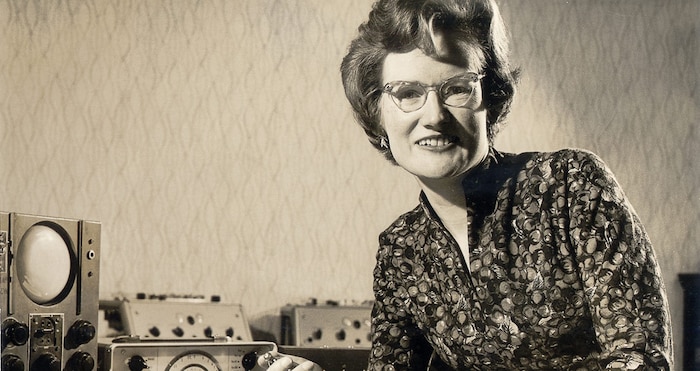
Sometimes remarkable things happen in the unlikeliest places. Take the rollerskating rink in a quiet west London street that, converted into the BBC’s beautiful Maida Vale Studios in 1934, played host to some extraordinary people who quietly revolutionised modern music.
“It was a very exciting place,” remembers Paddy Kingsland, a composer there from 1970-’81. “There was freedom to do what you wanted and everyone was determined to do new things with sound. It was dusty and pokey, underfunded and peculiar, but I bet there were very few places that wonderful in the world.”
While concert orchestras practised in nearby halls and bands recorded sessions next door, BBC Radiophonic Workshop was doing something altogether weirder than their neighbours. Working with strange machines in cramped, tiny rooms, and spooling yards of tape around long, cold corridors, they created compelling soundtracks for television and radio programmes. But they also brought electronic music to the masses, introducing the man in the street to the avant-garde.
The story of the Radiophonic Workshop begins in the 1950s, a decade of rations and austerity, but also great optimism. After the Second World War, the BBC had been trying to bolster British morale and identity by broadcasting intelligent shows and contemporary plays on the earliest incarnation of Radio 3, The Third Programme. Music balancer Daphne Oram and studio engineer Desmond Briscoe were brought in to create sound effects for them, and the sounds that they made, using new-fangled tape-splicers and sine wave oscillators, were an instant hit. Oram pressured the BBC to establish its own music unit. In 1958, her demands were green-lit and, with her as the first studio manager, the Radiophonic Workshop was born.
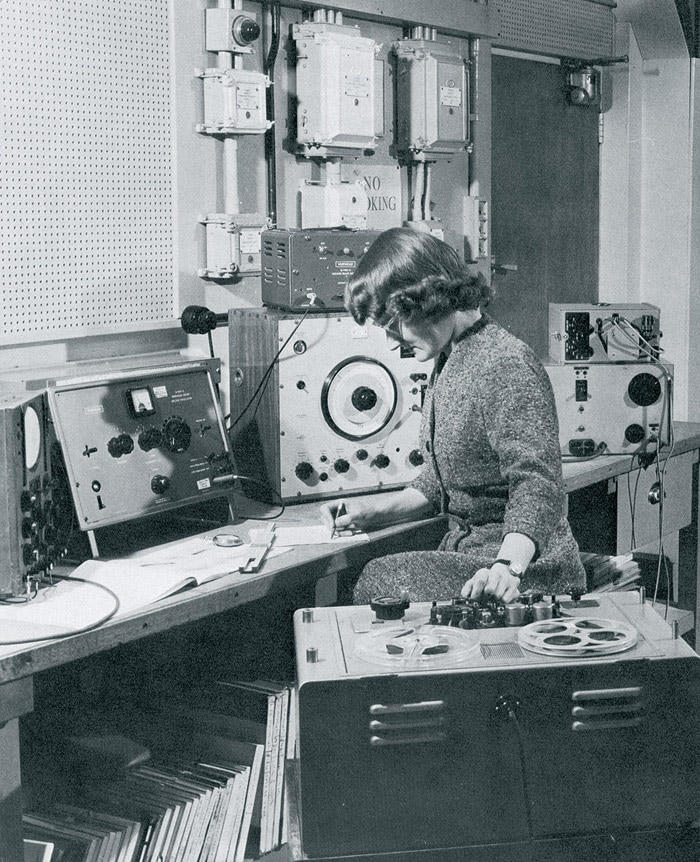
In its first few decades, the Workshop wasn’t considered particularly special by the BBC, says Kingsland. “It was just another department – there wasn’t any kudos about being there at all. Desmond Briscoe would say, ‘If anyone wants to come in for a week, hurry up, we’ll have you’.” But between 1958 and 1996, the Workshop would transform itself from a small offshoot of the BBC’s drama department to an internationally recognised hub of sonic innovation and radical new techniques.
One of the Workshop’s biggest contributions to music is what happened in those early, pre-synthesiser days, when electronic music was in its awkward adolescence. Oram and Briscoe were particularly inspired by French composer Pierre Schaeffer’s musique concrète – music made by recording sounds onto magnetic tape, still a relatively new invention back then. They would then play the tape backwards, at different speeds, and edit it cleverly. Traditional instruments were also rejected, while new sources of noise and clatter were encouraged. This also suited the BBC funding bodies, whose resources for the unit were minimal. “In the very beginning, Desmond [Briscoe] had been given £2,000 and the key to the BBC’s junk pile and that was it,” said Workshop composer Brian Hodgson in 2007. “The place kept going for years on what we called fagends and lollipops.” Fag-ends were the bits of “unwanted rubbish” that the composers could play with, while lollipops were the occasional longed-for machines, like the new Philips machines and vocoders bought for the department in the mid-1960s. The employees would also play with the building itself – setting up microphones in different places to encourage echo and reverb, and making long loops by stretching their tape out of the doors, through the corridors of the building and back again.
The Workshop had a bit of a reputation for driving people nuts...
These limitations created something magical in Maida Vale. They encouraged a spirit of playful experimentation that produced the strange, quirky sounds that gave the Workshop its name, both in early BBC horror dramas such as Quatermass and The Pit and comedy programmes like the popular Goon Show. But by 1960, Daphne Oram had left to build her own studio, frustrated by the BBC’s lack of support. Desmond Briscoe remained with technical assistant Dick Mills and Oram’s replacement, Maddalena Fagandini, while engineers Brian Hodgson and David Cain, jazz pianist John Baker and Cambridge music and mathematics graduate Delia Derbyshire joined the team shortly after. Oram went on to invent a technical musical language called Oramics and compose for herself, while the Workshop bumbled along as best it could. Then, in 1962, they were given a show to work with about a timetravelling, regenerating humanoid – a show that would cement the department’s reputation.
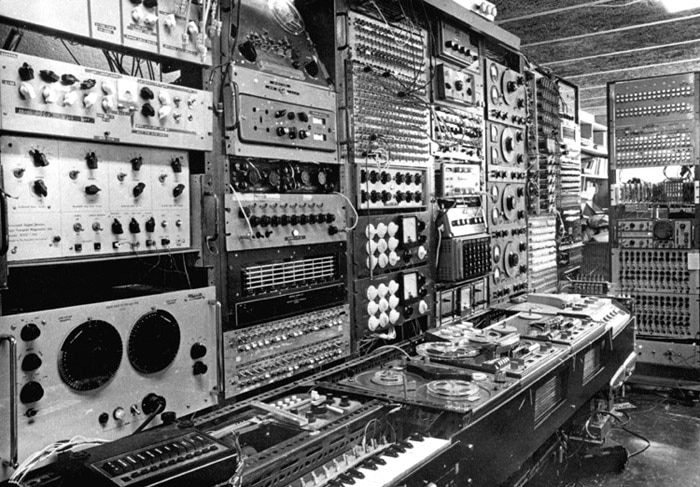
It is easy to forget just how fertile for popular culture the very early ’60s were. Rapidly developing technology and the dawn of the space age was inspiring pop songs such as the Tornados’ "Telstar" and jazz musicians like Sun Ra and George Russell, while atmospheric, extraterrestrial themes flooded TV and radio. Doctor Who was first broadcast in 1963, and the Radiophonic Workshop’s original music was at the heart of its success, creating a new world of strange creatures, swooshing spaceships and scary Daleks. More amazingly, these extraordinary sounds came from the manipulation of very ordinary items. Brian Hodgson made the sound for the Tardis by scraping his mother’s frontdoor key along the bass strings of a dismantled piano, for example, then processing it electronically with echo and reverb. Ring modulators turned actors’ voices into the heart-stopping robo-Nazi declamations of the Daleks, while Delia Derbyshire made an array of strange sounds by hitting an aluminium lampshade, recording its chime, and manipulating her tape to make different effects.
Derbyshire is most famous, however, for realising the "Doctor Who Theme" through electronic oscillators, tape loops and reverse effects, making it the first fully electronic BBC signature tune. Its composer, Ron Grainer, was so impressed by her treatment that he battled to get her a co-composer credit, but the BBC ignored his requests, preferring to keep its employees anonymous.
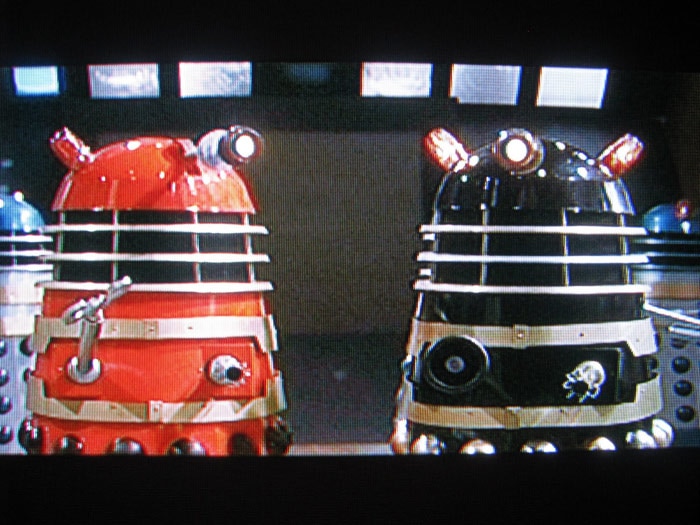
Throughout the 1960s, the Workshop was veiled in secrecy, which contributed to several myths about the effect its music could have. Initially, the BBC only offered composers short contracts, because they feared that experiments with electronics could lead to mental illness, while the Workshop’s obsession with otherworldly, dream-like sounds was said to create a forbidding studio atmosphere. “The Workshop did have a bit of reputation for driving people nuts,” laughs Kingsland. “I asked to work there permanently after a trial in the ’60s, and everyone warned me about it, saying, ‘God, you shouldn’t, you’ll go mad!’” There were problems there, he accepts: “Some professional jealousy, and everyone working on their own, which made it isolating. But it had magic about it, that’s what drew me in.”
By far the most demanding aspect about the Workshop was the amount of graft needed to make even the tiniest piece of music. Employees spent hours cutting and splicing. Experiments would fail as often as they flourished. John Baker was particularly well known for working into the night on intricate polyphonic compositions for TV and radio idents, such as the "Water Bottle Music" he wrote for Woman’s Hour’s letters slot. In 1967, he described the process (the recording was rereleased on Trunk Records’ John Baker Tapes in 2007). “The basic sounds used for this music were made from a recording of water being slowly poured from a cider bottle,” he began, in his soft East End lilt. “By taking just one of these sounds, all the notes that were wanted were made by playing this tape back at different speeds. The faster the tape goes, the higher the pitch. All the notes were measured and cut together in the right order.” He then explained how this technique was repeated laboriously for the bassline, and a rhythm track based around the popping of a cork. Then he had to mix the three tapes together with some electronic echo, all to create just eight seconds of music – an incredible amount of work for such a short composition.
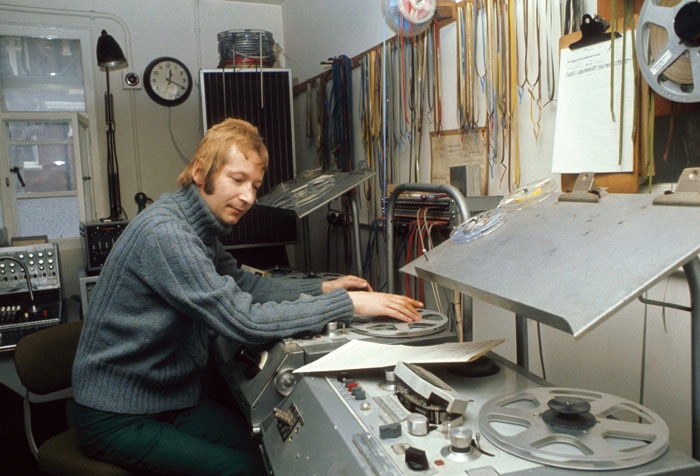
But by the late ’60s, these efforts were being rewarded. Sounds like Baker’s were entering the mainstream, influencing the psychedelia taking over pop. The Radiophonic Workshop received regular musical visitors, from Italian composers such as Luciano Berio to The Rolling Stones’ Brian Jones. Even the biggest group of the decade, The Beatles, were busy exhibiting their own tape experiments – and it’s interesting to note that McCartney’s "Carnival of Light" was played at the Million Volt Light and Sound Rave after Brian Hodgson and Delia Derbyshire’s own out-of-office group Unit Delta Plus.
The sounds for this music were made by recording water being poured out of a cider bottle.
But the machines for making electronic music were starting to change too. Synthesisers had arrived after the refinement of the electronic transistor, with the huge, voltage-controlled, analogue Moog proving an instant hit at 1967’s Monterey Pop Festival. Big bands like The Byrds, Simon and Garfunkel and The Doors used it on their 1968 albums, and in 1969, the EMS VCS-3 arrived – a portable, suitcase-sized machine made by Peter Zinovieff, once also a member of Unit Delta Plus. This portability and accessibility not only broadened musicmaking possibilities for people outside large studios, but it also suddenly made tape manipulation techniques out of date. The Radiophonic Workshop, just like everyone else, had to move with the times, and it changed the department radically.
In essence, synthesiser culture split the workshop in two, says Kingsland, who arrived just as the new technology was coming in. On the one hand, Brian Hodgson loved the ease and functionality of synthesisers, while John Baker found them too limited. “And he had a point,” agrees Kingsland. “Suddenly anyone with money could buy a synth, push a button, and make a noise. For John, that destroyed the magic of creating a sound that no one else had made – that peculiar relationship between the man and the machine.” In the next few years, both Baker and Derbyshire would leave the workshop, a move exacerbated by ill-health and alcoholism on both counts, bringing an end to the Workshop’s pioneering period.
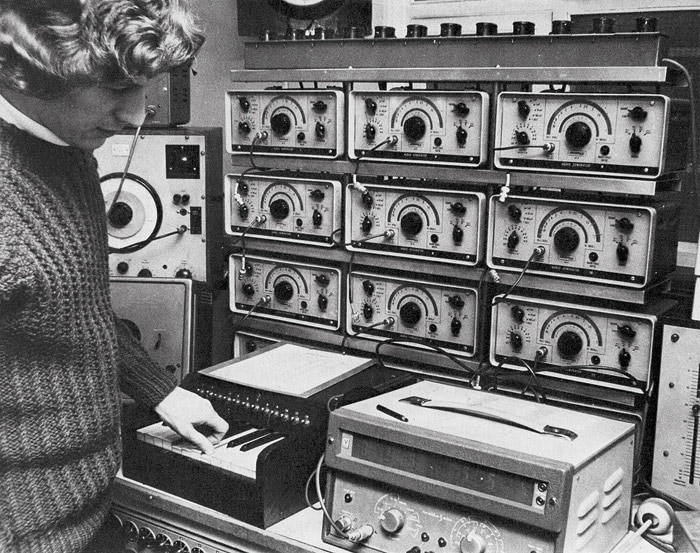
For the next two decades, as technology got simpler, cheaper and more resourceful, the Workshop became much more concerned with straight-forward composition rather than the invention of unusual noises. Nevertheless, it continued to be the home of inventive soundtracks. Kingsland’s joyful music for The Hitchhiker’s Guide to the Galaxy was particularly successful, while his eerie sound beds for The Changes, a drama about humans driven to destroy technology and return to a simpler age, said much about the changing culture of the Workshop itself. Composers Peter Howell, Roger Limb, Elizabeth Parker and Richard Attree followed, writing signature tunes for documentaries and science and nature programmes using MIDI, samplers and conventional instruments, while expanding Dr Who’s incidental effects library.
But by the early 1990s, the world had shifted, and the Radiophonic Workshop wasn’t the only place where this music was being made. As Hodgson said in 2007: “Originally, we were the only place that could do that sort of work. By the ’90s, kids had more technology on their own computers.”
Then, in 1992, came the killer blow – the appointment of John Birt to the position of Director General of the BBC. Birt brought in the Producer's Choice policy, forcing the departments to become internally competitive. He was so reviled, the BBC’s post-production department made a Christmas tape casting him as Davros, the head of the Daleks. “And we couldn’t compete,” says Elizabeth Parker, the last composer to leave the workshop. “The BBC was looking to use freelancers, who had no overheads. We received regular wages, had our own studios – we weren’t cost-effective.”
A new studio manager was brought in from Rumbelows – a retail chain more in the business of selling electronic goods than making noises out of them – to look at the books. “We knew that was that. In some ways, it was sad, but in others, it was right. After all, times had moved on, and with talent and the right equipment, which was much easier to get, anyone could do what we did.”
Nevertheless, Parker still finds it staggering to think how far technology advanced in the Workshop’s short life. Parker returned her key to the Maida Vale caretaker on a cold afternoon in 1996, and the doors officially closed in 1998.
But after the death of the Workshop, just like the Doctor who made its name, came regeneration. When it closed, composer Mark Ayres was given 3,000 reels of Radiophonic material, and began work on preserving the archive. Delia Derbyshire also started to make music again, with Pete Kember of Spacemen 3. She died of renal failure in 2001, a year before two compilations of Radiophonic Workshop music would remind the world of her talents and those of her colleagues. Subsequent compilations of work by Derbyshire herself, as well as Daphne Oram and John Baker, added to the legacy, and a reunion concert last year in the London Roundhouse brought together Paddy Kingsland, Roger Limb, Peter Howell and Mark Ayres, each revisiting the music loved by so many people so many years ago and playing it live.
“It was a nerve-wracking, but also very heartwarming experience,” says Kingsland of the 2009 concert. “It made me realise how we had never ever played together before, how personal the music was to each of us, and how people looked at the Radiophonic Workshop as a part of their lives. That night the Roundhouse became our Tardis, taking us back to a much simpler age.”
And while he understands why commercial pop music is used on TV and radio in place of original compositions nowadays, he wonders if this is depriving young people of a sense of adventure and wonder, the values the Radiophonic Workshop saw as its reason for being.
Is this why the Workshop continues to fascinate people of all ages? Mark Ayres, who worked on Doctor Who during the Sylvester McCoy era, seems to think so. “The Radiophonic Workshop’s music was unique. There were no presets, no rules – everything was homemade and hand-crafted. That spirit of innocence and joyfulness remained until the workshop ceased to be. That’s why subsequent generations will always be interested in it – because when something is that human, it always sounds new.”
Such a sentiment would make Delia Derbyshire proud, as Brian Hodgson remembered in the obituary he wrote for her in 2001, recalling a night in the 1960s when she said something magical: “What we are doing now is not important for itself, but one day someone might be interested enough to carry things forward and create something wonderful on these foundations.” And how wonderful it is that people are doing just that, giving life to a workshop that belongs in the future, not the past. No doubt about it, the Radiophonic Workshop made the everyday world sound quite extraordinary.
[This article was originally printed during the 2010 Red Bull Music Academy in London as part of the Daily Note newspaper.]

